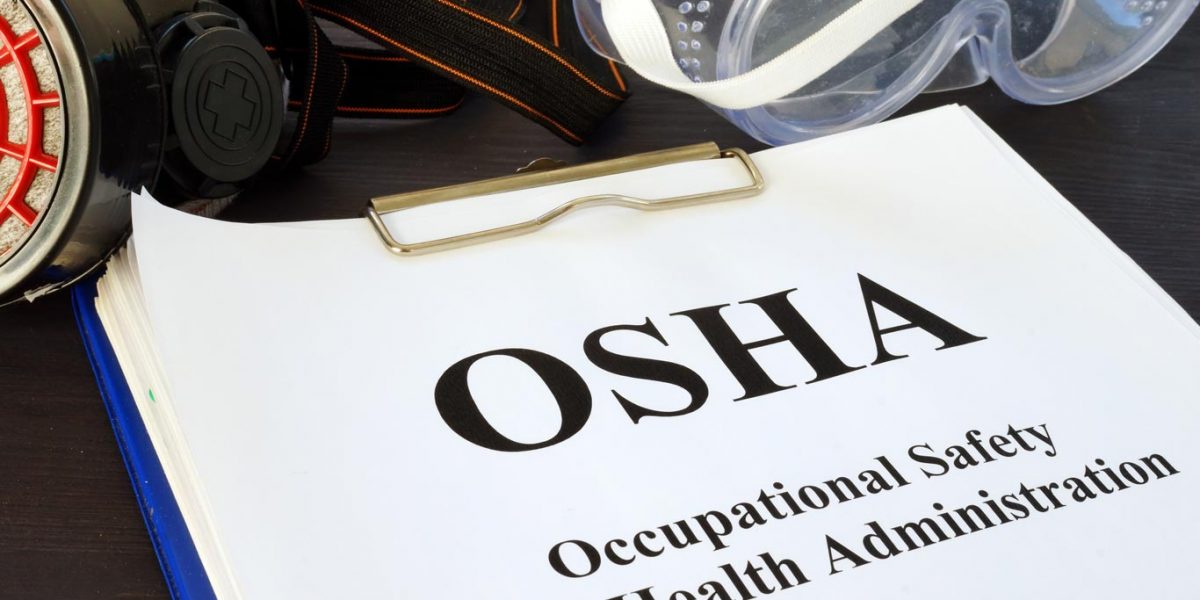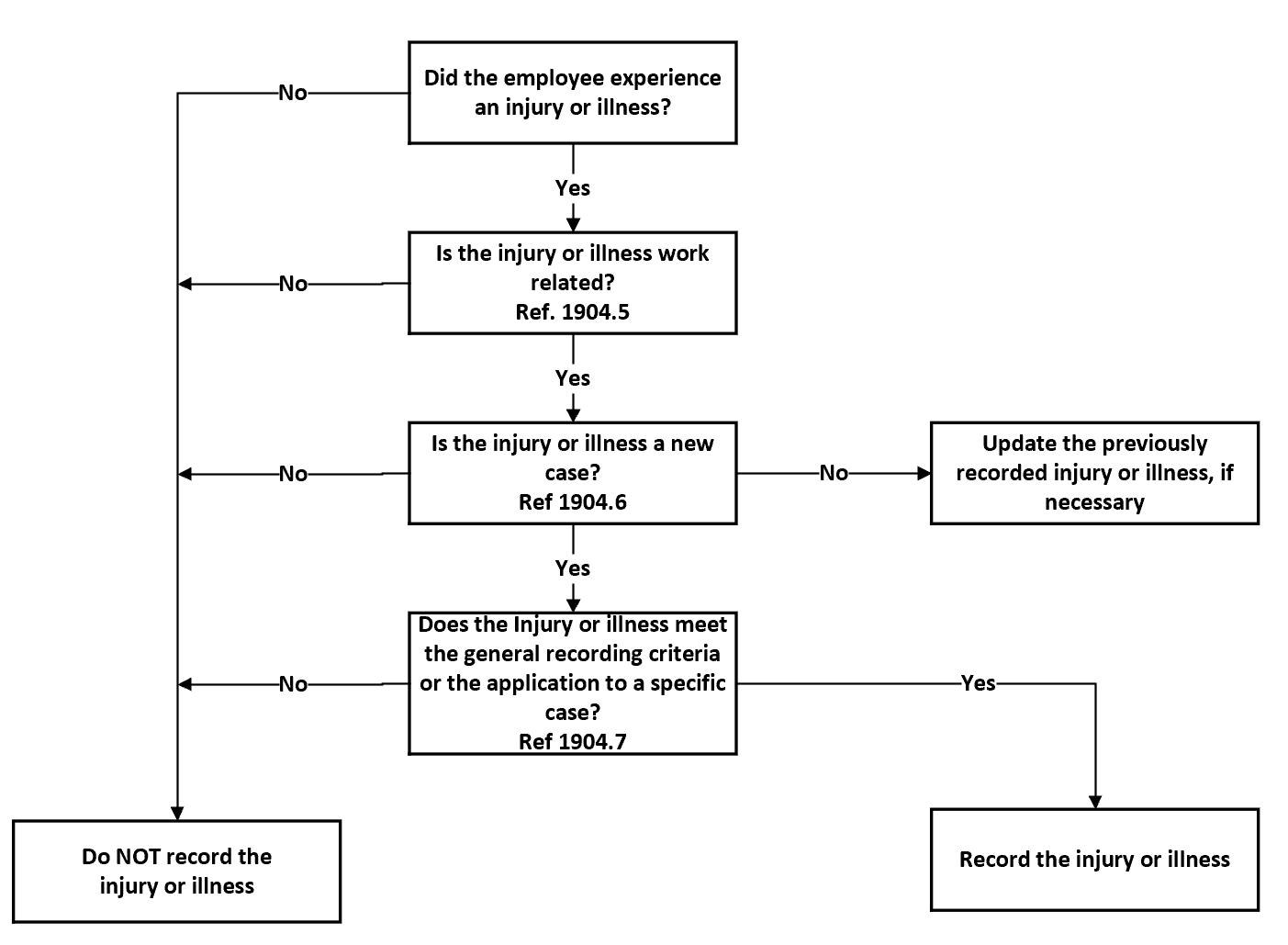
Understanding OSHA Reporting and Recording Requirements

In other posts, we reviewed the OSHA Forms 300, 300A and 301. In order to avoid under or over reporting on these forms, there are several elements that need to be understood to properly complete the process.
The first step is to determine if you need to record the injury. To make this determination, you must answer several questions, and the chart below will help. To avoid over or under reporting, understanding each question in the chart is important, and following the reference will help guide you through the determination process.

Although these questions appear to be simple, the answer may not always be clear. For example, determining work relatedness may not be straightforward for illnesses or injuries that may have occurred off-work. Further complicating this process is determining if the employee’s physical condition was aggravated by work conditions. It is important to remember that having symptoms that appear while at work does not dictate the injury or illness is work-related.
To help ensure proper reporting and potential workers’ compensation handling of injuries, you should conduct sufficient investigation into all alleged injuries and illnesses. Investigations should be sufficient to answer appropriate questions to determine new or pre-existing health conditions, cause and effect of work activities and environments, employee activities outside of work, and the employees’ fitness for duty.
Read the full OSHA regulation (29 CFR 1904).
If you have questions on work-related injuries and recording or work comp claims management, we can help. Contact Innovise today.



